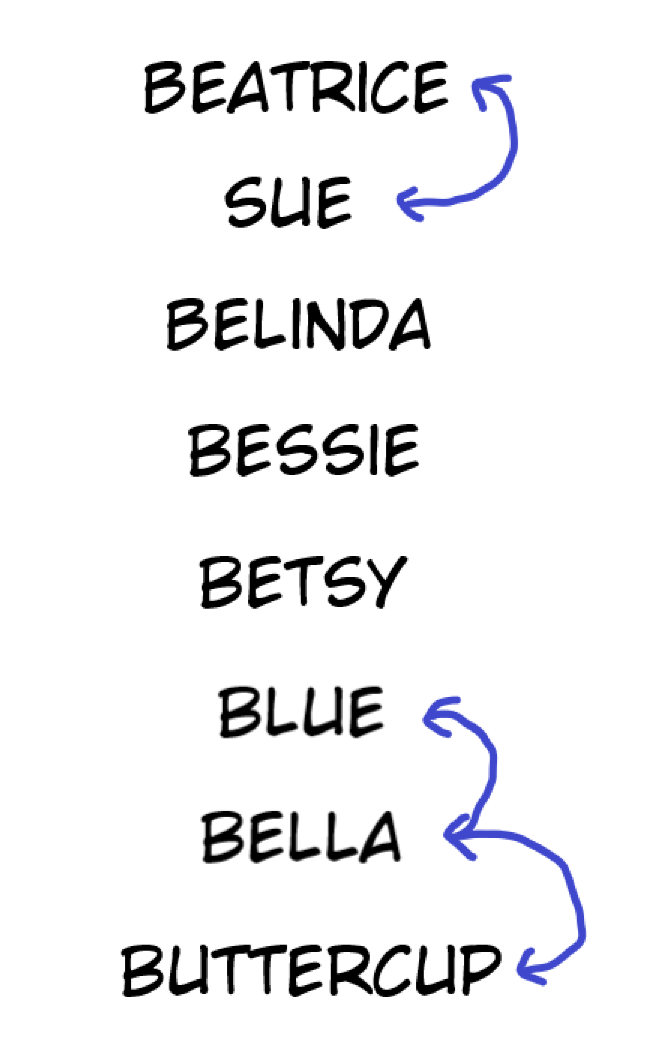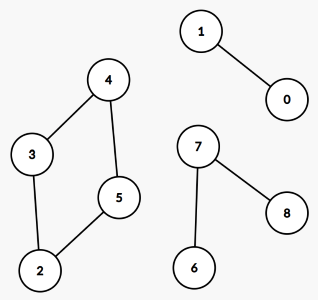Introduction to Graphs
Authors: Darren Yao, Benjamin Qi
Contributors: Nathan Gong, Ryan Chou, Kevin Sheng, Nikhil Chatterjee
What graphs are.
Note: Graphs will become a key topic in higher divisions. For Bronze, graphs are just a nice way to think about the structure of our data.
Graphs can be used to represent many things, from images to wireless signals, but one of the simplest analogies is to a map. Consider a map with several cities and bidirectional roads connecting the cities. Some problems relating to graphs are:
Is city connected to city ? Consider a region to be a group of cities such that each city in the group can reach any other city in said group, but no other cities. How many regions are in this map, and which cities are in which region? (Silver)
What's the shortest distance I have to travel to get from city to city ? (Gold)
For now, it suffices to learn how graphs are represented (usually adjacency lists).
| Resources | ||||
|---|---|---|---|---|
| CSA | interactive | |||
| CSA | interactive - adjacency lists and matrices | |||
| CPH | graph terminology, representation | |||
| IUSACO | graph basics and representation, trees | |||
| PAPS | adjacency matrices, lists, maps | |||
What Does a Bronze Graph Problem Look Like?
All of the problems below fall into at least one of the following two categories:
- The graph's structure is special (it's a tree, path, or a cycle).
- To solve the problem, all you need to do is iterate over the adjacency list of every vertex.
Knowing DFS can be helpful but it should not be required.
Example - Livestock Lineup
Focus Problem – try your best to solve this problem before continuing!
View Internal SolutionThis problem has multiple solutions. Can you find one that runs in only time?
Hint
Solution with Graphs - Livestock Lineup
While you can brute force all possible permutations of the cows, there is a solution that works in just , involving graphs!
Notice that since the input is guaranteed to be valid, we're always going to end up with "chains" of cows that we can arrange as we please. Using the sample given in the problem, we'd get a "chain" representation like this:
Note that cows that are not part of any chain can be considered their own chains of length 1 for implementation purposes.
With this representation in mind, we can iterate through the cows in lexicographical order. When we visit a cow that could be a possible start of a chain (a cow that only has one required neighbor), we go through its neighbors, adding cows as we go along, until we hit an end.
Implementation
Time Complexity:
C++
#include <algorithm>#include <fstream>#include <map>#include <string>#include <vector>using std::endl;using std::string;using std::vector;
Java
import java.io.*;import java.util.*;public class LineUp {// Assumed to be in sorted order (which it is)static final String[] COWS =new String[] {"Beatrice", "Belinda", "Bella", "Bessie","Betsy", "Blue", "Buttercup", "Sue"};public static void main(String[] args) throws IOException {
Python
COWS = sorted(["Bessie", "Buttercup", "Belinda", "Beatrice", "Bella", "Blue", "Betsy", "Sue"])cow_inds = {c: i for i, c in enumerate(COWS)}neighbors = [[] for _ in range(len(COWS))]with open("lineup.in") as read:for _ in range(int(read.readline())):words = read.readline().strip().split()
Problems
| Status | Source | Problem Name | Difficulty | Tags | |
|---|---|---|---|---|---|
| Silver | Normal | Show TagsColoring, Tree | |||
| Bronze | Hard | Show TagsColoring | |||
| Bronze | Hard | Show TagsDFS, Tree | |||
| Bronze | Hard | Show TagsCycle, Permutation | |||
| Bronze | Very Hard | Show TagsDFS, Tree | |||
| Bronze | Very Hard | Show TagsTree |
Check Your Understanding
Module Progress:
Join the USACO Forum!
Stuck on a problem, or don't understand a module? Join the USACO Forum and get help from other competitive programmers!

